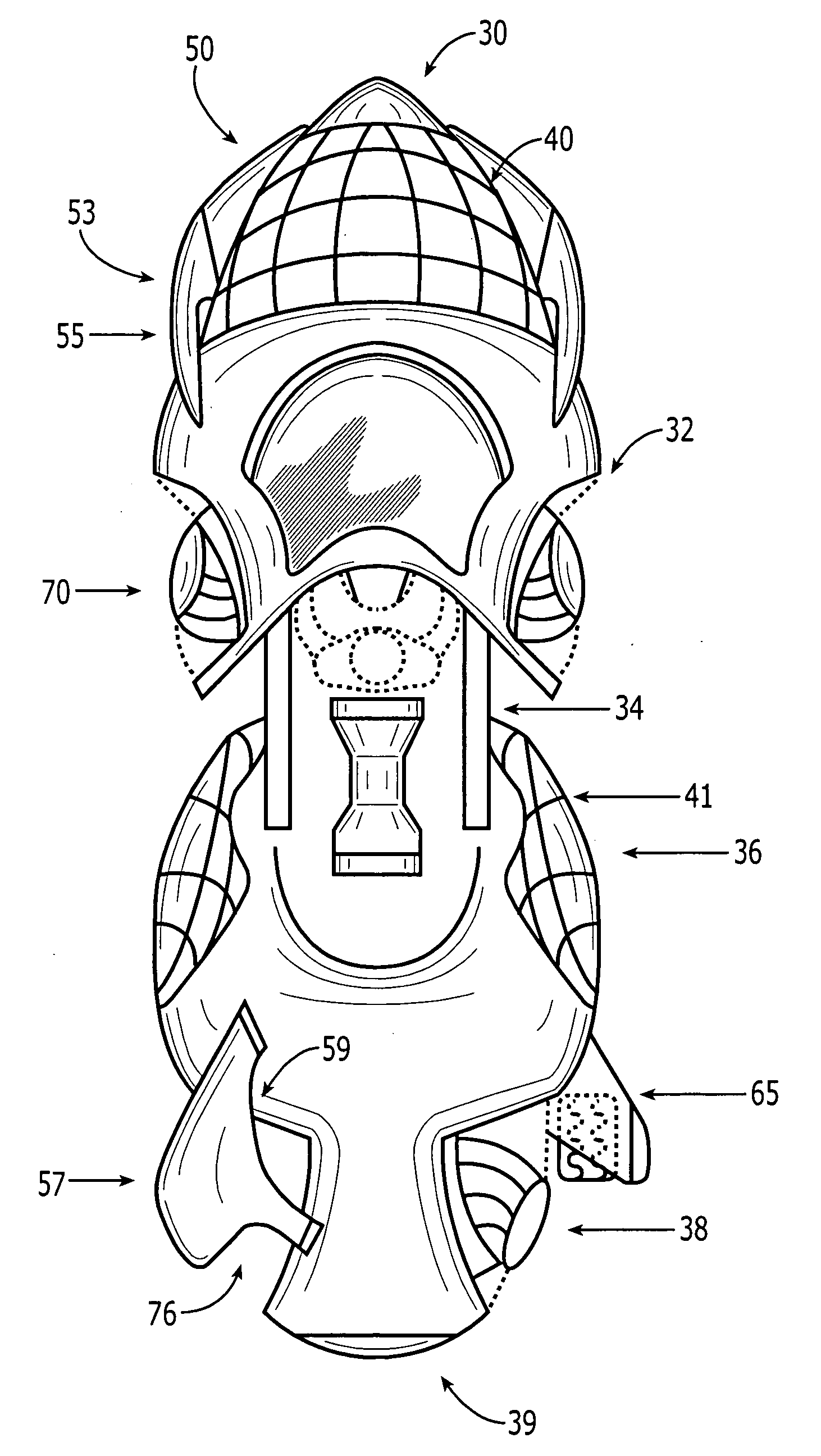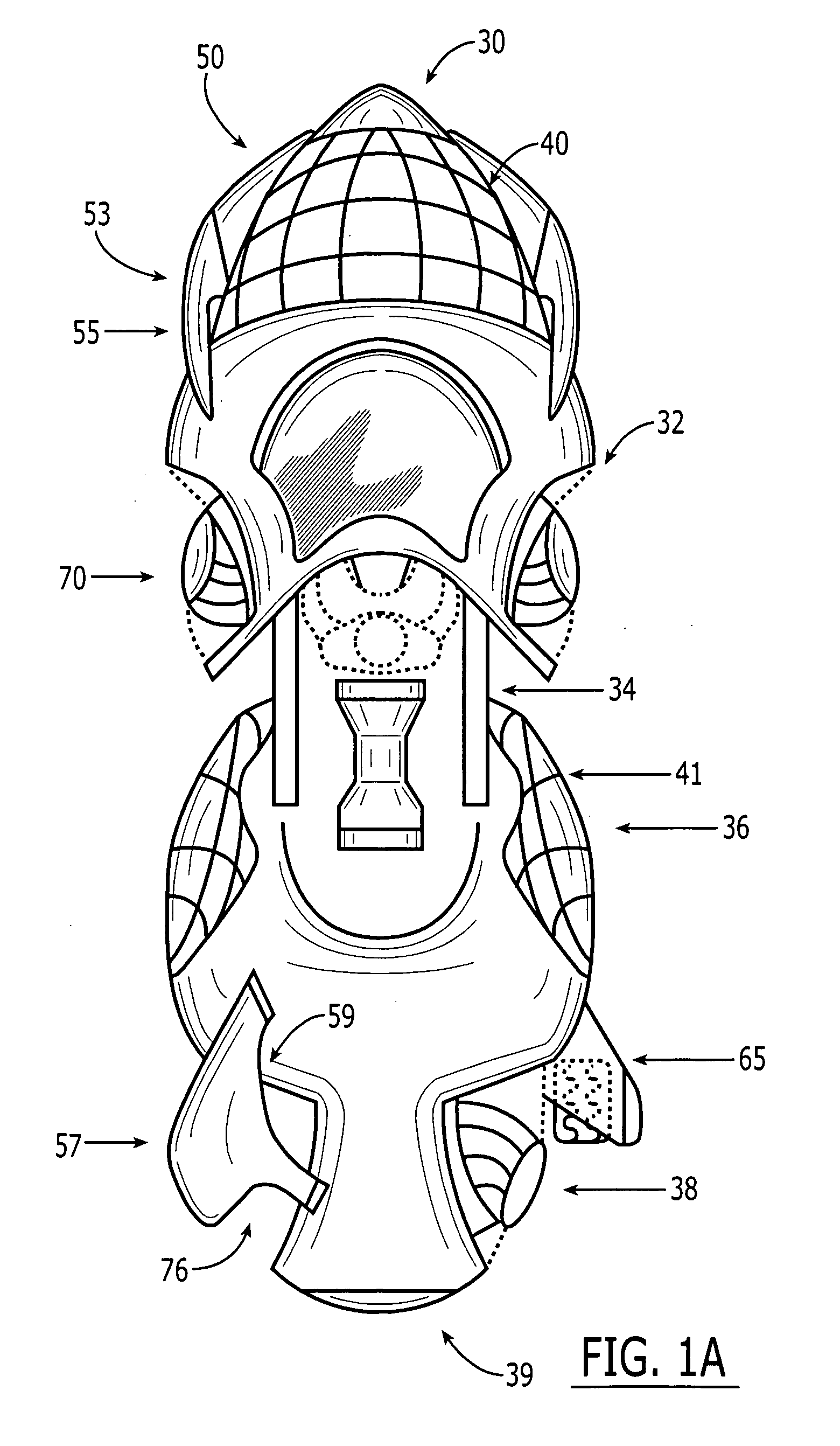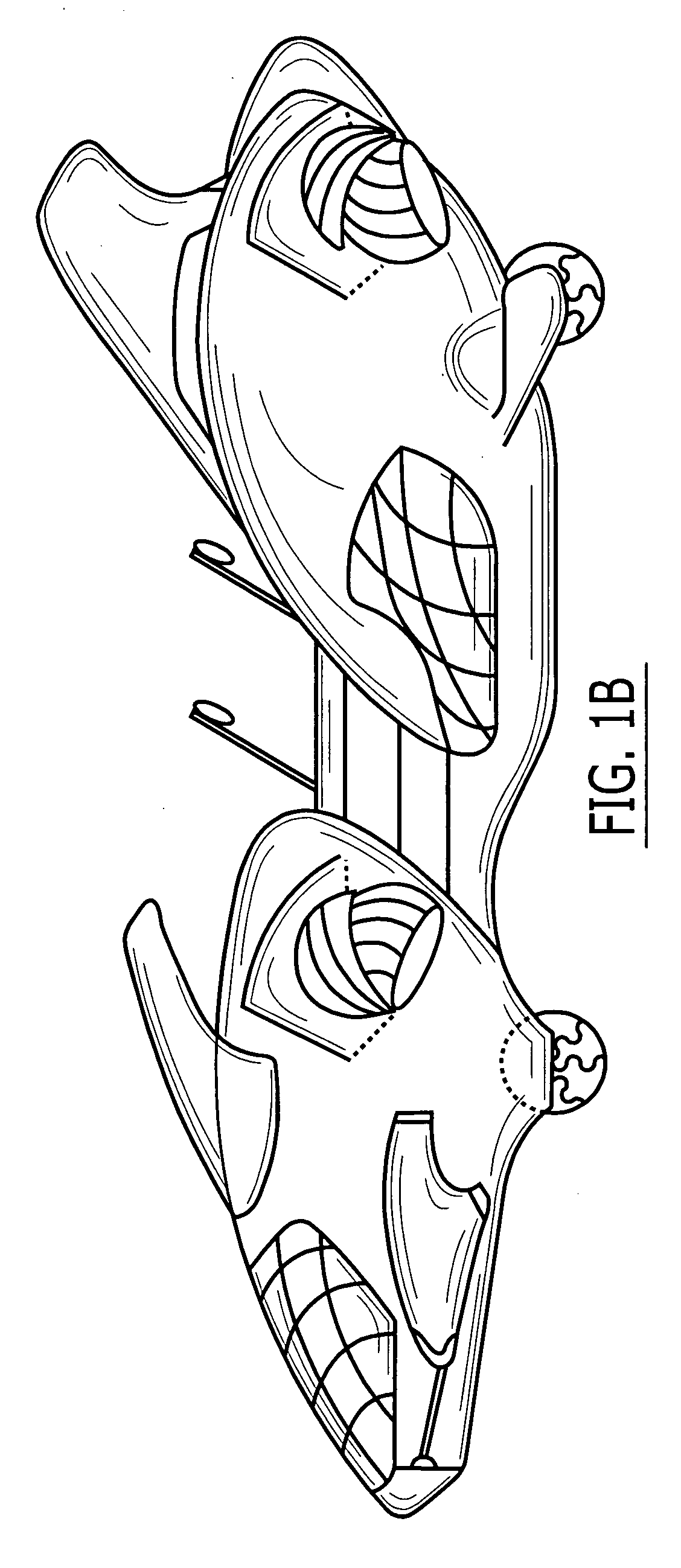VTOL lifting body flying automobile
a technology of lifting body and flying automobile, which is applied in the direction of steering devices, bicycle equipment, aircraft convertible vehicles, etc., can solve the problems of low efficiency of airflow deflecting devices, limited ability to manage load shifts on aircrafts, and low efficiency of such devices, so as to reduce the effect of mechanical interactions and reduce the number of components
- Summary
- Abstract
- Description
- Claims
- Application Information
AI Technical Summary
Benefits of technology
Problems solved by technology
Method used
Image
Examples
Embodiment Construction
[0080]Detailed descriptions of the preferred embodiment are provided herein, it is to be understood however that the present invention may be embodied in various forms. Therefore, specific details disclosed herein are not to be interpreted as limiting, but rather as a basis for the claims and as a representative basis for teaching one skilled in the art to employ the present invention in virtually any appropriately detailed system, structure or manner.
[0081]The invention will now be described by way of example with the aid of the accompanying drawings. In the images, a new and improved Vertical Take Off and Landing Lifting Body fuselage is shown in FIGS. 1A, 1B,1C, with integrated technologies of a Flying Automobile. All external structures shapes and placements are optimal for lift producing effects on a wingless aircraft, with the fuselage composed of two almost ovoidal shape sections 32, 36, 38, joined in between by a central 34 seating section. As seen from a frontal and also si...
PUM
 Login to View More
Login to View More Abstract
Description
Claims
Application Information
 Login to View More
Login to View More - R&D
- Intellectual Property
- Life Sciences
- Materials
- Tech Scout
- Unparalleled Data Quality
- Higher Quality Content
- 60% Fewer Hallucinations
Browse by: Latest US Patents, China's latest patents, Technical Efficacy Thesaurus, Application Domain, Technology Topic, Popular Technical Reports.
© 2025 PatSnap. All rights reserved.Legal|Privacy policy|Modern Slavery Act Transparency Statement|Sitemap|About US| Contact US: help@patsnap.com



